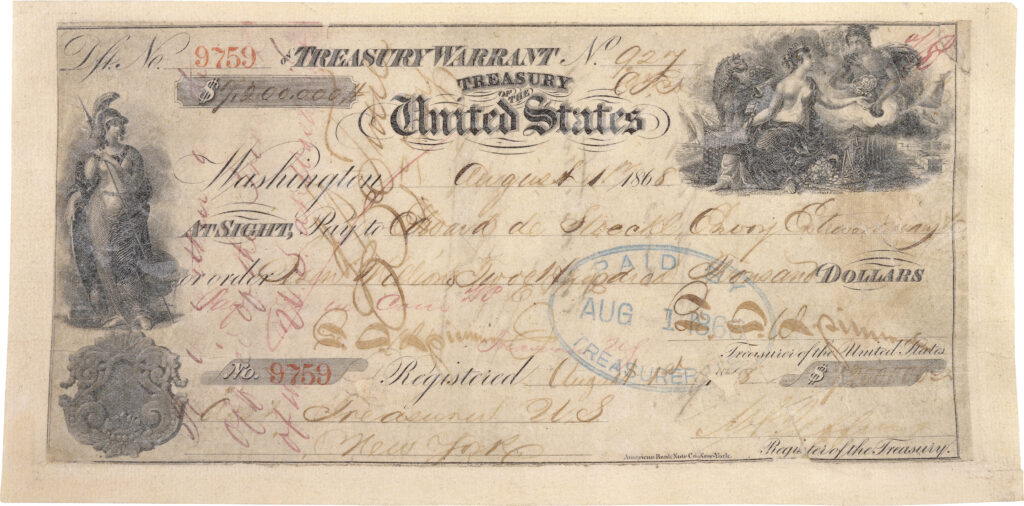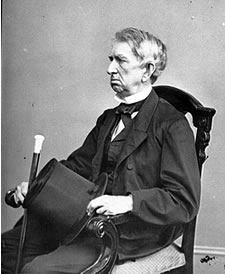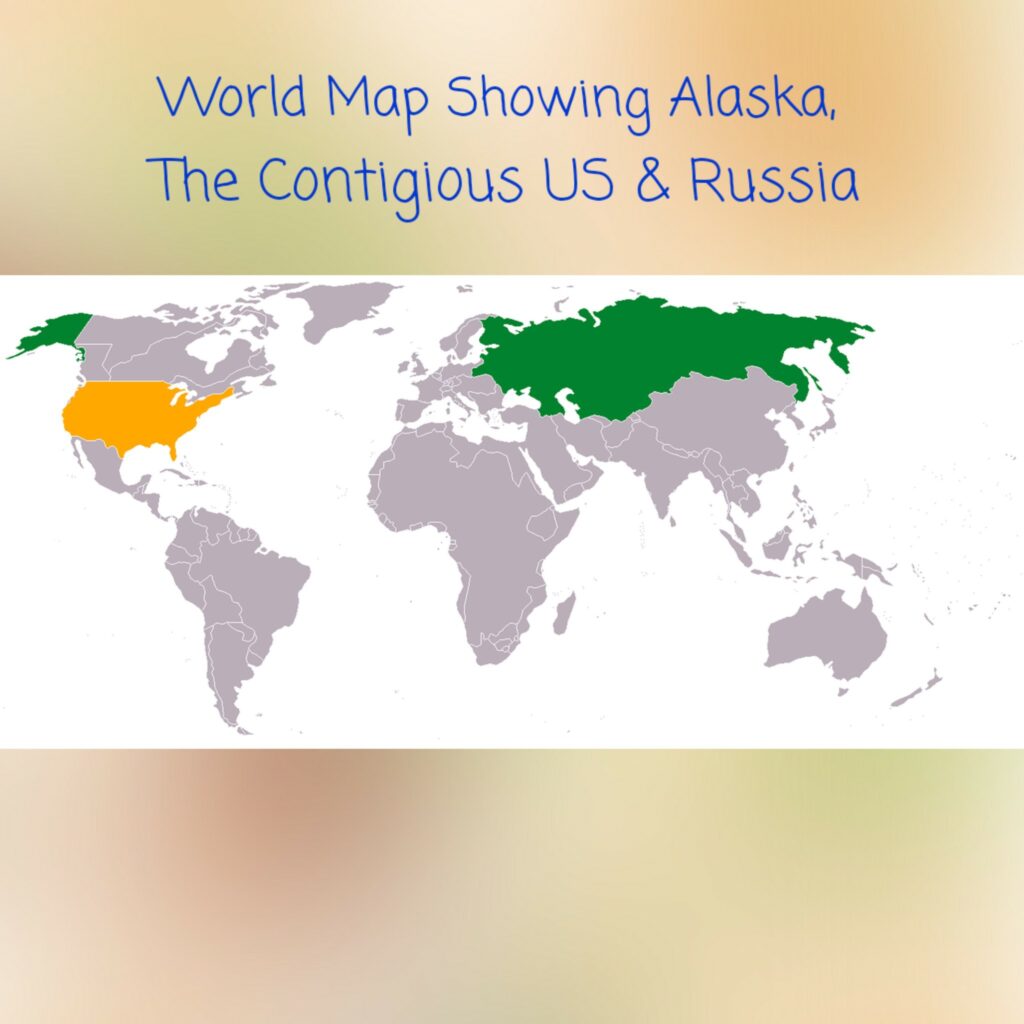One Hundred Fifty-Seven Years Ago Today, a Landmark in American Expansionism Was Finalized
The Alaska Purchase — formally enacted on October 18, 1867 — was an enormous milestone in the history of American territorial expansion. Often derisively referred to as “Seward’s Folly” or “Seward’s Icebox” after Secretary of State William H. Seward, the transaction saw the United States acquire a vast and sparsely populated landmass from the Russian Empire for $7.2 million.

http://www.ourdocuments.gov/doc.php?doc=41 — Public Domain,
https://commons.wikimedia.org/w/index.php?curid=3815513
The purchase was controversial at the time, with critics questioning the value of such an isolated and ostensibly barren territory. Now, with the benefit of hindsight however, it’s abundantly clear that the acquisition of Alaska was not only a prudent investment but a key strategic move that significantly bolstered the geopolitical position of the United States. Let’s take a look back.
Background Factors
The idea of acquiring Alaska was initially met with skepticism from many American politicians and the public. Russia, for its part, was motivated to sell Alaska for several reasons. By the mid-19th century, the Russian Empire was nearly broke following the costly Crimean War (1853-1856). The Czar and his ministers were increasingly concerned about their ability to defend Alaska from British encroachment, particularly through neighboring British Canada.

Public Domain
https://commons.wikimedia.org/w/index.php?curid=102201036
Alaska had proven to be a financial burden to Russia as well. The fur trade — initially profitable and the primary reason for Russian presence there — was in decline. Further, the territory’s great distance from Moscow made it nearly impossible to administer.
The United States — on the other hand — was emerging from the Civil War period and beginning to rebuild itself. William H. Seward, — Secretary of State under Presidents Abraham Lincoln and Andrew Johnson — was a vocal and aggressive advocate of territorial expansion This policy had already seen the United States acquire vast areas of land through the Louisiana Purchase (1803), the annexation of Texas (1845), and the Treaty of Guadalupe Hidalgo (1848). Seward saw the purchase of Alaska as a natural extension of America’s Manifest Destiny — the belief that the country was destined to expand across the North American continent.
Negotiations between the United States and Russia happened quickly. Russian minister Eduard de Stoeckl and Seward finalized the terms of the sale in March 1867. The US agreed to pay $7.2 million — roughly 2 cents per acre — for 586,412 square miles of territory. The treaty was signed on March 30, 1867, and was ratified by the U.S. Senate on April 9, 186. The official transfer of Alaska occurred several months later on October 18, when the Russian flag was lowered and the American flag was raised in the town of Sitka, marking the formal transition of power.
Controversy and Opposition
Despite Seward’s enthusiasm, the Alaska Purchase faced considerable opposition. Critics of the purchase ridiculed it as a waste of government resources. The terms “Seward’s Folly” and “Seward’s Icebox” reflected the widespread belief that Alaska was a barren, frozen wilderness of little strategic or economic value.
The timing of the purchase — immediately following the Civil War, when the United States was still reeling from the costs of reconstruction — further fueled criticism. Many in Congress and the media argued that the government should prioritize domestic concerns over territorial expansion.
But Seward remained resolute in his vision. He argued that Alaska would prove valuable both in terms of resources and as a strategic buffer between the U.S. and the expanding British Empire. In addition, Seward saw Alaska as a potential gateway to increased trade with Asia — especially China and Japan — and as part of the broader geopolitical maneuvering of the Pacific.
Economic Potential
Seward’s vision of Alaska’s value as a resource-rich territory was vindicated within a few decades of the purchase, although the US government did little to develop or govern the territory early on, viewing it as a distant and inhospitable outpost. This lack of immediate development only seemed to confirm the critics’ concerns.

Left to right: Robert S. Chew, William H. Seward, William Hunter, Mr. Bodisco, Eduard de Stoeckl, Charles Sumner and Frederick W. Seward.
Painting By Emanuel Leutze – Public Domain,
https://commons.wikimedia.org/w/index.php?curid=4246381
This changed dramatically in the late 19th century when significant natural resources were discovered in Alaska, including gold, timber and fish. The Klondike Gold Rush of the 1890s brought thousands of prospectors and settlers to the region, transforming Alaska’s economy and laying the groundwork for future development. The discovery of vast oil reserves in the 20th century further underscored the strategic and economic importance of the region.
A Military Asset
Moreover, Alaska’s geographical position proved to be of immense military value in the 20th century, particularly during World War II and the Cold War. Its location at the northernmost tip of North America made it a critical defense outpost against potential threats from the Soviet Union. The construction of military bases and the Alaska Highway during World War II highlighted the significance of the territory in securing America’s northern frontier.
* * * * * * * * * * * * * * *
So there you have it. While initially dismissed as a blunder, the Alaska Purchase is now considered one of the most astute decisions in the history of American expansionism. The acquisition of Alaska not only provided the United States with vast natural resources but also cemented its position as a dominant power in the Pacific and Arctic regions. In retrospect, what was once viewed as “Seward’s Folly” has proven to be a 157-year cornerstone of America’s rise to global prominence.
By Steven Roberts



